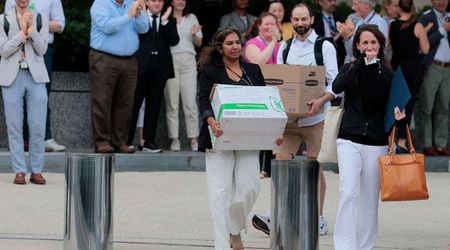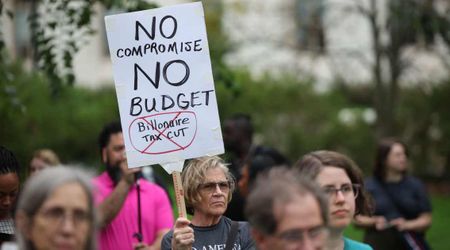Supreme Court Rules Against Race-Based College Admissions; What It Means

The Supreme Court recently banned the use of race in college admissions, overturning a long-standing precedent and potentially impacting the enrollment of Black and Hispanic students in elite schools. The decisions, stemming from lawsuits against Harvard University and the University of North Carolina, have sparked debates on affirmative action, diversity in higher education and the future of college admissions.
Supreme Court Ruling Against Affirmative Action
In a 237-page opinion, Chief Justice John Roberts wrote for the court's conservative majority, stating that the admissions programs of Harvard and UNC employ race in a negative manner and cannot be reconciled with the guarantees of the Equal Protection Clause, per CBS News. Roberts was joined by Justices Clarence Thomas, Samuel Alito, Neil Gorsuch, Brett Kavanaugh and Amy Coney Barrett. The rulings signal a shift away from race-based admissions policies and emphasize the importance of an individual's character and unique abilities rather than the color of their skin in the admissions process.
“Many universities have for too long wrongly concluded that the touchstone of an individual’s identity is not challenges bested, skills built, or lessons learned, but the color of their skin,” Chief Justice John Roberts wrote in the said opinion.

Impact on Black and Hispanic Students
The Supreme Court rulings are expected to have significant implications for Black and Hispanic students seeking admission to elite schools. With the removal of race as a factor in admissions decisions, these students may face greater challenges in gaining access to higher education institutions. The rulings come at a time when the country is grappling with the effects of systemic racism and when colleges and universities are striving to expand access for underrepresented students.

Dissenting Opinions and Arguments
Justices Sonia Sotomayor, Elena Kagan and Ketanji Brown Jackson dissented from the majority opinions. Sotomayor argues that the court's decision "rolls back decades of precedent and momentous progress" and cements a superficial rule of colorblindness in an endemically segregated society. Jackson highlights the systemic racism ingrained in American history and criticizes the majority's detachment from the country's actual past and present experiences. These dissenting opinions shed light on the concerns surrounding the elimination of race-conscious admissions policies.

Background and Context of the Lawsuits
The lawsuits against Harvard and UNC were filed by Students for Fair Admissions, an advocacy group opposing race-based admissions policies. The group argued that these policies discriminate against Asian American applicants. Harvard and UNC defended their use of race as one of several factors in admission decisions, emphasizing the importance of maintaining diversity on their campuses.

The Debate on Diversity in Higher Education
The rulings have reignited the ongoing debate on diversity in higher education. Supporters of affirmative action argue that considering race as a factor in admissions helps address historic inequities and promotes diversity. They emphasize the importance of holistic admissions policies that take into account a range of factors beyond test scores and grades. Critics of affirmative action contend that race-conscious policies can lead to discrimination against certain racial or ethnic groups. They advocate for race-neutral approaches that consider socioeconomic status and other factors to achieve diversity.
The Supreme Court rulings raise questions about the future of college admissions and how institutions will ensure diversity on their campuses. In response to the decisions, President Joe Biden says, "I very strongly condemn it." He called on colleges and universities to continue using measures of diversity and adversity in their admissions processes. Recommendations for the future include considering applicants' financial backgrounds and hardships they have faced (including racial discrimination) and expanding outreach efforts to underrepresented communities. Additionally, exploring race-neutral factors that promote diversity, such as socioeconomic status and geographic diversity can help universities maintain inclusive and equitable student bodies.






















